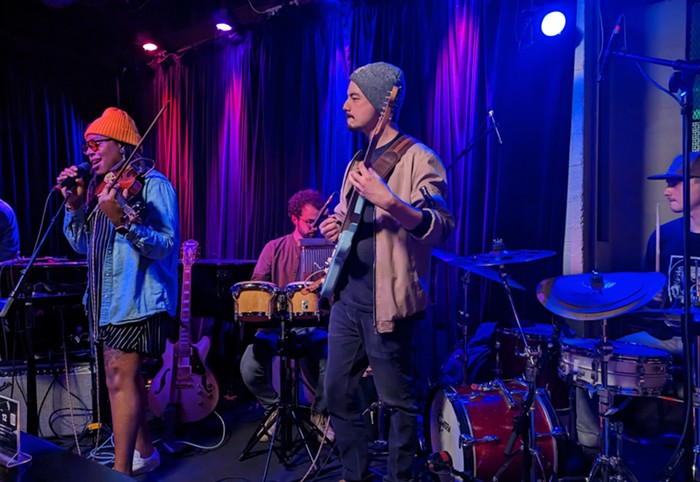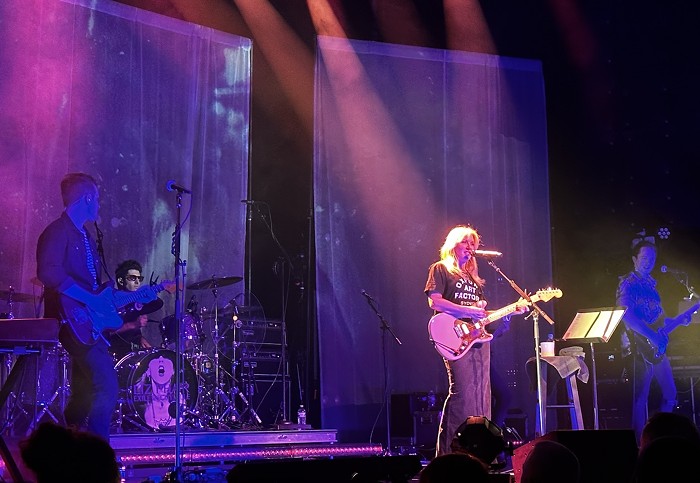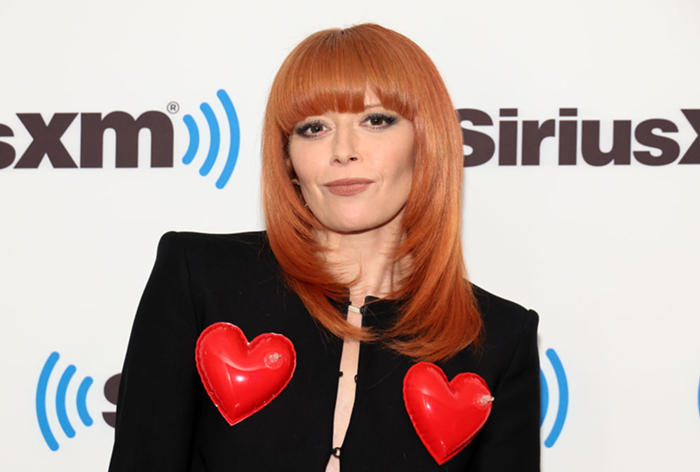FAN OR NO FAN, chances are your introduction to South African rave hiphop phenomenon Die Antwoord ("the answer" in Afrikaans) was a memorable one. It was almost certainly at the computer, during the wave of hype that swept the 'nets in early 2010 with a handful of videos that went so virulently viral that it severed the group's relationship with their web host. Among the wonders were the rhythmically swinging balls of frontman Ninja (real name Watkin Tudor Jones), the first taste of what would be reoccurring visual themes—live rats, black-and-white graffiti, unusual physical appearances—and co-frontwoman Yo-Landi Vi$$er mooning the camera with a nearly drained bottle in her hand.
On first impression, they (three of them, including wallflower DJ Hi-Tek) came off as scrappy misfits from the other side of world, who—despite the suspiciously high production value of their first video, "Enter the Ninja"—had been seemingly plucked off the dusty, obscure sidewalk of their Cape Town suburb. Their enthusiastically outdated fashion sense, crowned by Vi$$er's precisely massacred haircut, worked because they owned it, and their intoxicating combination of cultural mystique and fun-loving but angry bravado sent millions scurrying to Google the term "Zef"—the white, blinged-out lower-middle-class sub-culture with which Die Antwoord heavily identifies.
But let's not kid: The soon-after discovery that Ninja was an established name in South African hiphop known for adopting a variety of stage personas somewhat diminished the excitement. Discovering a voice that authentically represents a little-heard-from social group is one thing, but an art project warrants a big step back to reevaluate.
Not every card came back down in their favor. The relentlessly weird videos, the questionably homophobic-sounding moments in their lyrics (Ninja's uninspiring defense: "DJ Hi-Tek is gay"), and a general inability to consistently make music as interesting as their visual package have led to dismissal by some. Nonetheless, Die Antwoord descends into Portland for the second time, behind their new record Ten$Ion, with plenty of diehard fans and the casually curious who'll plunk down just to witness a spectacle. After all, it's one thing to listen to a Die Antwoord record; consuming the complete visual and audio package is a far more interesting proposition.
"It's super random, but it all means something," Ninja tells me of their notoriously bizarre videos while walking home in South Africa. He's just hung up with Johannesburg photographer Roger Ballen, whose stark black-and-white images Die Antwoord blatantly refers to. Ten$Ion and the "I Fink U Freeky" video, a collaboration with Ballen, would drop just days later. "We started Die Antwoord because of him," Ninja says of Ballen, "and he broke it down in two words: 'documentary fiction.' That's where the answer for us comes, when you inject your imagination into reality."
To whatever extent Ninja and Vi$$er's identities have suffered discredit, they're not likely to swap them out anytime soon. "I don't really love anything else I've done as much as Die Antwoord," Ninja says of his persona—which he doesn't consider a character as much as the realization of who he's always been. "I don't think people fully get it. It's more a side of myself that's at a deeper level. It's like I'm heading into this dark water, and I can't stop. I want to see what's in there."



















